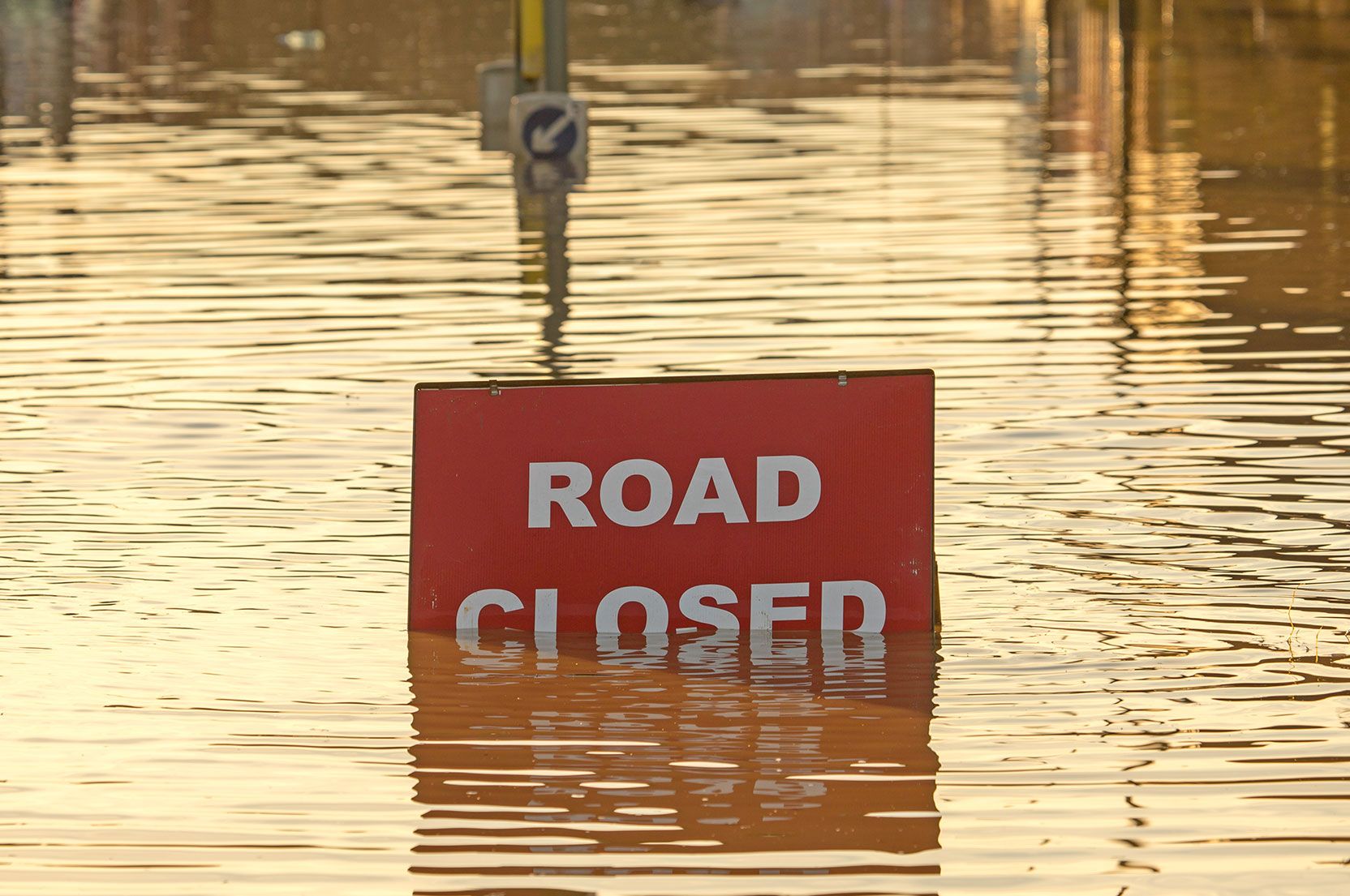Recovering after a flood

An increase in extreme weather across the UK is exacerbating the problem of flooding.
An increase in extreme weather across the UK is exacerbating the problem of flooding, which is why it pays to have the correct insurance in place for your business premises. When high tides and stormy weather cause coastal flooding and rivers burst their banks, the Environment Agency has an early warning system in place. But pluvial or surface flooding tends to occur with little warning, often in areas not usually prone to flooding, placing more properties than ever at risk.
Obviously, there are actions you can take to mitigate flood damage, such as installing flood barriers and non-return valves on sewers to prevent back flow; or wet proofing measures, such as flood resistant building materials and raised electrical wiring. Developers can also help to mitigate risks by ensuring adequate drainage and run-on facilities, separating storm and foul water systems and including appropriate capacity provision for storing water within green landscaping.
When flooding does happen however, water can enter your premises via a number of routes, including walls and floors, doors, windows, airbricks and vents, drains, sewers and pipework.
Over 5.2 million (one in six) properties in England are at risk of flooding. Flood damage costs the UK an estimated £1.1bn per year.
With little time to react to such an event, it is important to know what to do if the worst happens. Serious flooding can cause structural damage and make buildings unsafe, so do not re-enter the property unless you know it is safe to do so, and if possible, turn off electricity before floodwater enters your property. Do not throw anything away if you are planning to claim for contents insurance – it is all evidence.
The role of the loss adjuster
If you are flooded, contact us immediately and we will arrange for a loss adjuster to visit and assess the damage where appropriate. The loss adjuster’s role is to find the quickest and most efficient way to return your facility to a usable condition. In most cases, they will try to visit you within 48 hours, although in late 2015, when Storm Desmond hit Cumbria, it took longer as bridges were swept away and access was an issue for everyone.
Provided you have adequate insurance, your insurer will deploy damage mitigation specialists to remove water, manage removal of contents and dry the property using state-of-the- art techniques. If your contents are insured, a loss adjuster will advise you what can and cannot be restored, depending on the level of contamination. As it can take many months for flooded premises to dry out, it is also important to make sure you have cover for temporary new accommodation in place.
Underinsurance
Underinsurance is a common problem in flood situations, so please check with us that your business and assets are adequately insured. As well as replacing stock and repairing your premises, you may not be able to trade for months, so your policy should also include Business Interruption. This will compensate you for lost income and profits, and increased expenses caused by flooding. Please call us and we will be happy to advise you on all aspects of flood insurance.

